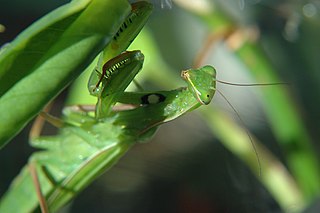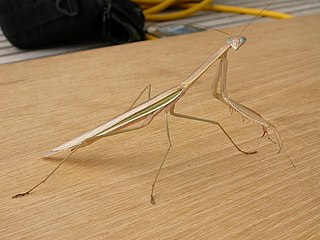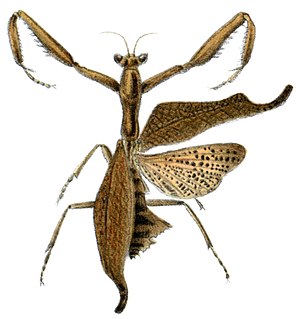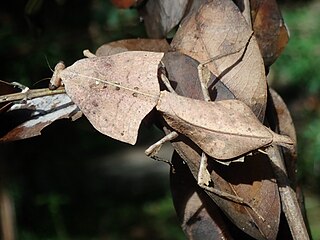
The Chinese mantis is a species of mantis native to Asia and the nearby islands. In 1896 this species was accidentally introduced by a nurseryperson at Mt. Airy near Philadelphia, United States. Tenodera sinensis often is erroneously referred to as Tenodera aridifolia sinensis because it was at first described as a subspecies of Tenodera aridifolia, but Tenodera sinensis is now established as a full species.

Mantidae is one of the largest families in the order of praying mantises, based on the type species Mantis religiosa; however, most genera are tropical or subtropical. Historically, this was the only family in the order, and many references still use the term "mantid" to refer to any mantis. Technically, however, "mantid" refers only to members of the family Mantidae, and not the 14 remaining families of mantises. Some of the most recent classifications have promoted a number of the mantid subfamilies to the rank of family, e.g. Iridopterygidae, Sibyllidae, Tarachodidae, Thespidae, and Toxoderidae, while other classifications have reduced the number of subfamilies without elevating to higher rank.

The genus Mantis is in the family Mantidae, of the mantis order Mantodea.

Tenodera angustipennis is a species of mantis native to Asia and nearby areas of Oceania. The species was introduced and became established in the eastern United States. Tenodera angustipennis was noticed as early as 1921 in Aberdeen, Maryland, but that occurrence was not noted in a published record until 1933.

Brunneria is a genus of praying mantises in family Mantidae. They are often called stick mantis for their slender shape and the species of the genus are native to the Americas.

Sphodromantis gastrica, with the common names African mantis or common green mantis, is a species of praying mantis from Africa.

Tenodera australasiae, the purple-winged mantis, is species of praying mantis. Found in Australia, it is common in most parts of Brisbane (QLD). Both males and females are capable of flight. The species has not been shown to be parthenogenetic.

Acanthops is a genus of mantises in the family Acanthopidae, containing 20 species that can be found in Central and South America.
Alalomantis coxalis is a species of praying mantis in the family Mantidae.
Stagmomantis tolteca is a species of praying mantis in the family Mantidae.

Mantises are an order (Mantodea) of insects that contains over 2,400 species in about 430 genera in 30 families. The largest family is the Mantidae ("mantids"). Mantises are distributed worldwide in temperate and tropical habitats. They have triangular heads with bulging eyes supported on flexible necks. Their elongated bodies may or may not have wings, but all Mantodea have forelegs that are greatly enlarged and adapted for catching and gripping prey; their upright posture, while remaining stationary with forearms folded, has led to the common name praying mantis.

Stagmatopterinae was a subfamily of the Mantidae, a family of insects within the order of mantises (Mantodea). Many of the genera have now been placed in the subfamily Vatinae.
Deroplatyini is a tribe of the subfamily Deroplatyinae of the family Mantidae of Mantodea.
Phasmomantis is a genus of mantis of the family Mantidae.

Statilia is a genus of praying mantis that resembles dead or living grass. Statilia species live in Australia, Africa, Asia and islands.
Phasmomantis sumichrasti is a species of mantis of the family Mantidae.

The Hierodulinae are a subfamily of praying mantids, originally used by Brunner von Wattenwyl. It was restored as part of a major revision of mantid taxonomy, and now contains genera previously placed elsewhere in the family Mantidae.

The Deroplatyidae are a new (2019) family of praying mantises, based on the type genus Deroplatys. As part of a major revision of mantis taxonomy, the subfamily Deroplatyinae has been moved here from the previously-structured family Mantidae.
This page is based on this
Wikipedia article Text is available under the
CC BY-SA 4.0 license; additional terms may apply.
Images, videos and audio are available under their respective licenses.













